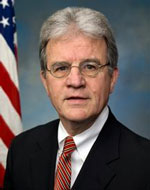Community HousingWorks (CHW) and HelioPower hosted a celebration today for the completion of the first multifamily affordable Solar Housing MASH) project to be completed at Las Serenas, an affordable housing community located in San Diego. The 108-unit neighborhood will receive free solar energy from the solar power system and it is estimated that the energy will offset nearly 20 percent of the residents’ annual electricity bills. Additional improvements will also take place to lower utility bills and create a more sustainable community through a $475,000 federal grant from NeighborWorks America.
 MASH Track 2 funds supported the installation of a 67.5 kilowatt (kW) DC solar photovoltaic facility with 100% of its production going to tenants using Virtual Net Metering. The solar facility will offset approximately 1,000 kilowatt hours (kWh) per unit annually, and are estimated to save each tenant over $100 in their yearly electricity expenses. In addition, with the installation of a performance monitoring system for each inverter, CHW and HelioPower modified the system to offer free wireless internet access to all residents.
MASH Track 2 funds supported the installation of a 67.5 kilowatt (kW) DC solar photovoltaic facility with 100% of its production going to tenants using Virtual Net Metering. The solar facility will offset approximately 1,000 kilowatt hours (kWh) per unit annually, and are estimated to save each tenant over $100 in their yearly electricity expenses. In addition, with the installation of a performance monitoring system for each inverter, CHW and HelioPower modified the system to offer free wireless internet access to all residents.
Congressman Bob Filner (D-Calif.) was the keynote speaker during the event. “I’m excited to celebrate the completion of the solar power system at Las Serenas! With the combined resources of federal funding to NeighborWorks America and California Solar funding, we are investing in the community and promoting the development of renewable energy sources in our own backyards.”
In addition to the free solar energy, the program also provided residents with job training and educational support on all aspects of sustainable living. Other “green” apartment improvements included the installation of low-e, dual paned windows, water-saving tub and kitchen fixtures, and related kitchen and bath repairs.
Community HousingWorks President and CEO Sue Reynolds concluded, “As a leader in sustainable development, CHW knows the value of creating a safe and affordable place for families to live and thrive while at the same time building exceptional and eco-conscious apartments. Today, Las Serenas has accomplished both of these goals!”






 Sen. Tom Coburn (R-OK) went to the floor last night with an amendment to eliminate the Volumetric Ethanol Excise Tax Credit (VEETC) immediately, while at the same time Sen. John McCain (R-AZ) is proposing to eliminate funding of ethanol infrastructure.
Sen. Tom Coburn (R-OK) went to the floor last night with an amendment to eliminate the Volumetric Ethanol Excise Tax Credit (VEETC) immediately, while at the same time Sen. John McCain (R-AZ) is proposing to eliminate funding of ethanol infrastructure. The latest
The latest 
